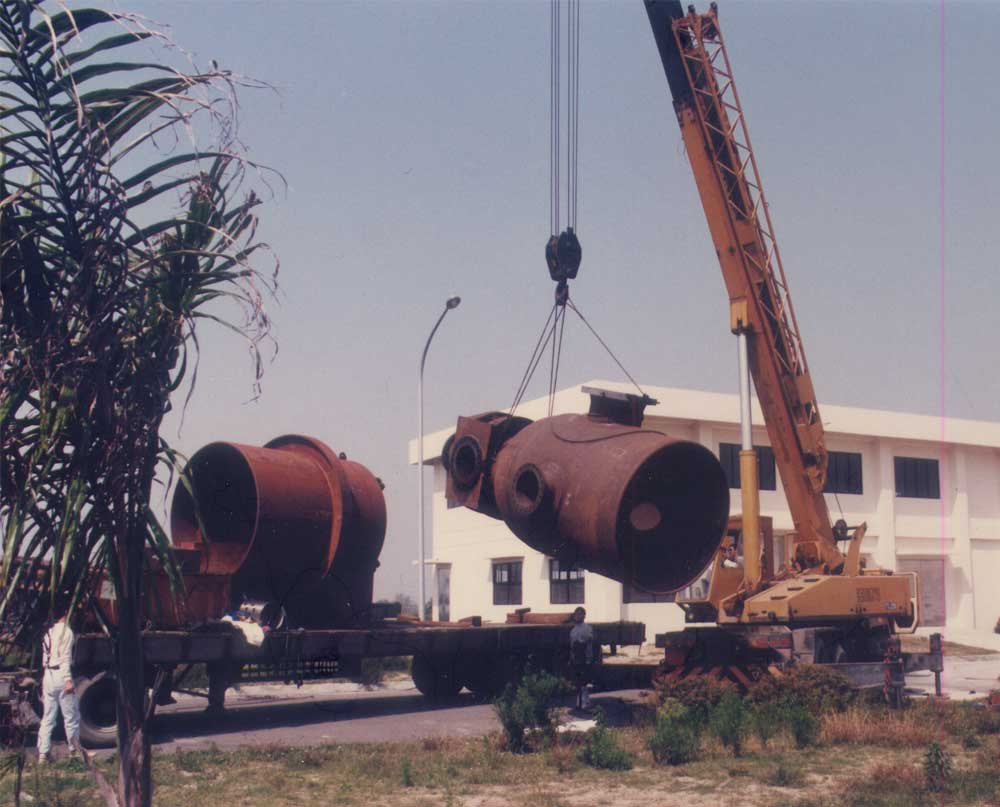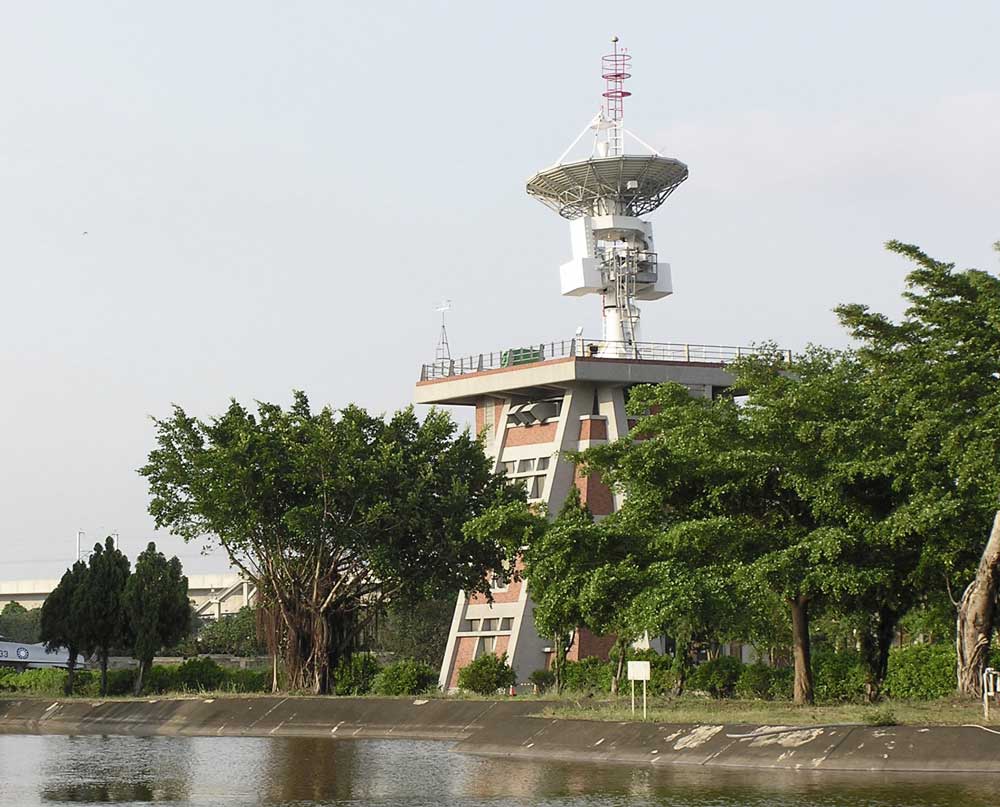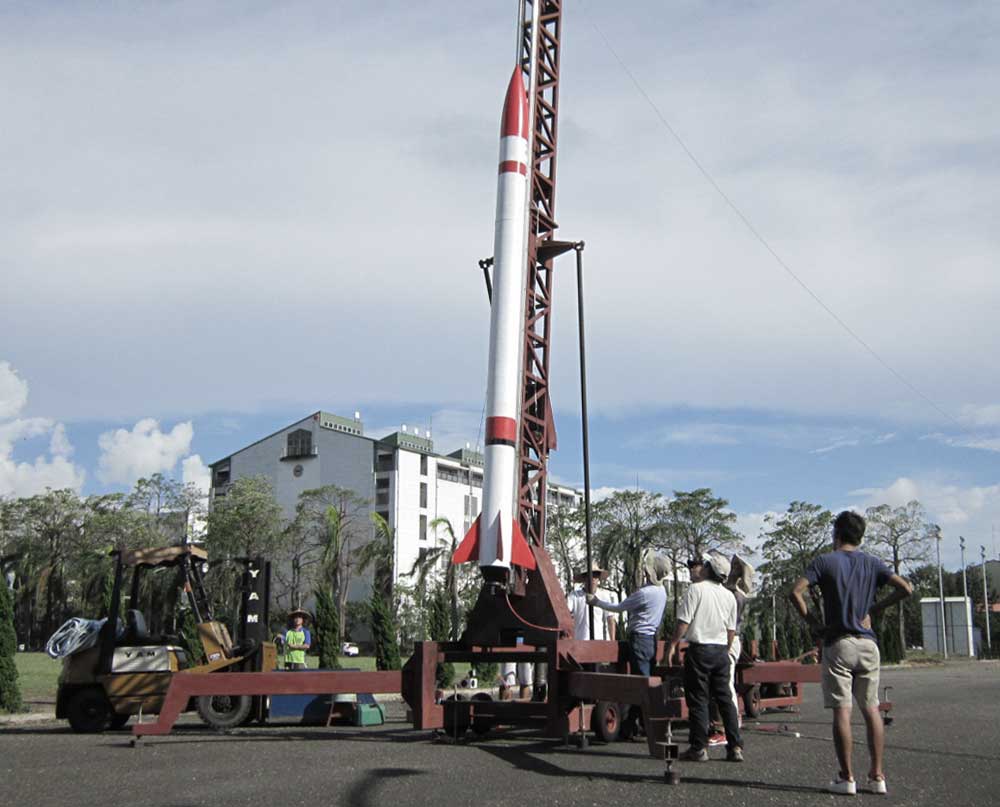The hybrid rocket test launch in Shuihai Village (in southern Taiwan) in 2019 (Courtesy of NCKU Aerospace Science and Technology Research Center)
1987
In 1987, NCKU founded an aerospace science research center to enhance national defense capibility
Since Taiwan lost its seat in the United Nations in 1971 and the United States severed formal ties with Taiwan in 1979, Taiwan has sought to strengthen its defense powers in order to protect national security. In 1980, the then president, Chiang Ching-Kuo ordered the Republic of China Army to develop indigenous defensive fighters to improve our armed forces.
Under the circumstances, the then president of NCKU, Han-Min Xia, strongly invited Prof. Chih-Cheong Chao, an aeronautical scientist, to accept a teaching position at NCKU. In 1982, Prof. Chao wrote a formal letter to the then chief of the general staff, Bo-Cun Hao, emphasizing the need to develop aeronautics talent for Taiwan’s aviation and aerospace industries. In 1983, the Graduate Institute of Aerospace Engineering was founded in response to Taiwan’s urgent need of developing aerospace technology. This graduate institute hired more than thirty young professors to improve its curriculum, and the Ministry of National Defense offered the university a piece of land for construction of buildings for classrooms and dormitories for faculty members. The National Science Council provided subsidies for cooperation with foreign institutions, while the NDIDF allotted a portion of its expenditure on facilities acquisition for faculty compensation and scholarships for students. It is no overstatement to say that many governmental agencies joined to promote the development of aerospace technology and cultivate talent in related industries.
To improve research capacity in aerospace technology, the Aerospace Science Laboratory was set up in Guiren District in 1987. With advanced facilities such as a transonic tunnel and combustion labs, a significant number of young professionals have been developed for aviation and aerospace industries. In 1993, the above-mentioned Laboratory was upgraded to NCKU Aerospace Science and Technology Research Center in hopes of accelerating national aeronautical development and achieving the multi-aims of sharing facilities with other research centers, conducting prospective research and cultivating talent, as well as promoting collaboration between industries, the government, and academia so as to innovate and develop new technologies most in demand by industries.
Since its foundation, this NCKU-based research center has assumed a key role throughout the phases of development of Taiwan’s aerospace technology. FS-2 is equipped with an Imager of Sprite/Upperatmospheric Lightning, and FS-3 and FS-7 are dispatched to monitor aviation weather conditions, launch a CubeSats, and perform remote sensing activities, in addition to working with international organizations on a space mission. Remarkable results included the invention of AMS, an EU project called QB50, and RISESat, a microsatellite mission carried out by Japan.
Considering that Taiwan has played a pivotal part in the aerospace race globally, NCKU has continuously polished its R&D capacities in hopes of carving out an elevated place in the aerospace field for Taiwan.

A 1990 photo showing the construction of the transonic tunnel and the combustion lab was a daunting challenge to NCKU. (Courtesy of NCKU Aerospace Science and Technology Research Center)

A 1997 photo of the Formosan Satellite Tracking Tainan Station I (Courtesy of NCKU Aerospace Science and Technology Research Center)

A drill of the hybrid rocket operations in 2016 (Courtesy of NCKU Aerospace Science and Technology Research Center)
